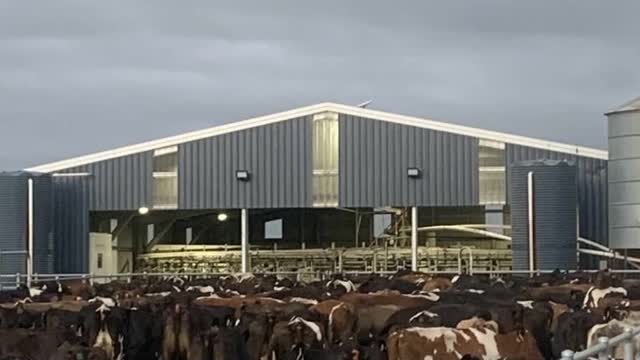

Cow Shed or Dairy is where the cows get milked.

A Rotary Shed is circular and the cows get on, and go around to get milked like a horizontal Ferris wheel.

A Herringbone Shed has a Row on either side of a Pit where the person milking the cows stands.

The Yard is where the cows stand before they enter the cow shed to get milked.
Cupping Up or Cupping the Cows is putting the milking cups on the cows teats to milk the cows. This is done by a Milker or Milk Harvester.

Cupping Up is performed at Cups On in a rotary cow shed, which is immediately after the cow gets on the platform.

The Platform is the concrete circle the cows walk onto to get milked.

The cows will walk into an individual Bale where they will stand to get milked.

Cups are what’s put onto the cows teats to get the milk out of the udder.

The Udder is where milk is made in the cow.

The Teats are where the milk comes out of the udder. There are 4 teats; each teat comes out of 1 Quarter of the udder.

There are two Back Quarters, located closest to you, and two Front Quarters, located furthest from you. These quarters may be referred to based on their position, for example. Back Right Quarter.

In a herringbone shed cows get Rowed Up. This is encouraging them to move into the row next to the other cows before you milk them.
At Cups Off the cups are taken off the cows after they finish milking. This process can happen automatically with Cup Removers.
Alternatively, the cups off process can be done manually by the Cups Off Person.
Cows are then Teat Sprayed to protect them from being afflicted by mastitis and to keep their teats in good order. Teat spraying can either happen manually by the cups off person...
Or automatically using an Auto Spray system.

Milk goes from the cow through filter socks to take out any particles that might have been picked up.

It then goes through a plate cooler where water cools the milk.

And it finally ends up in the vat to cull further and wait for the milk tanker to pick it up.